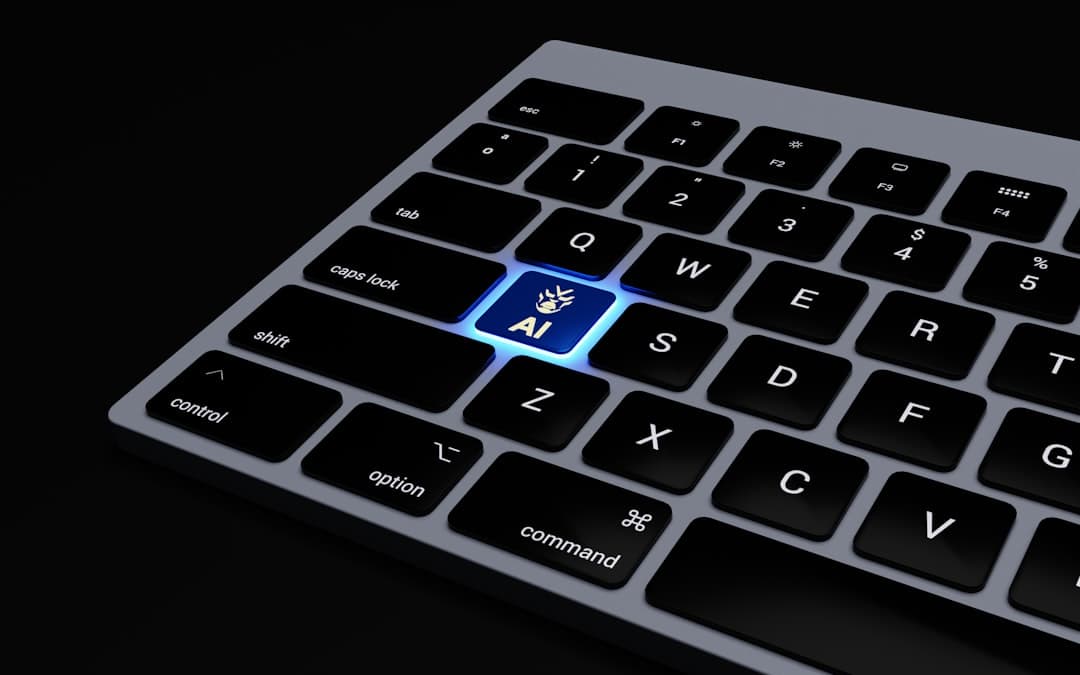Artificial Intelligence (AI) chat systems have come a long way thanks to Generative Pre-trained Transformers (GPT). Using deep learning methods, the AI language model GPT generates text that looks like it was created by humans. It is an effective communication tool due to its capacity to understand and react to natural language input. GPT models are able to produce logical and contextually relevant answers to a broad range of queries because they have been trained on large-scale text datasets.
Key Takeaways
- GPT, or Generative Pre-trained Transformer, is an AI language model that can understand and generate human-like text.
- GPT has revolutionized communication by enabling more natural and efficient interactions between humans and machines.
- GPT is transforming customer service by providing instant and personalized responses to customer inquiries.
- GPT allows for personalized communication by understanding and adapting to individual writing styles and preferences.
- GPT is making language translation more accurate and accessible, breaking down communication barriers across different languages.
- GPT is simplifying business communication by automating repetitive tasks and improving the overall efficiency of communication processes.
- The future of communication with GPT holds the promise of even more advanced and seamless interactions, further blurring the lines between human and AI communication.
Numerous chatbots & virtual assistants have been enhanced by the integration of this technology, allowing them to have more meaningful and organic conversations with users. The integration of GPT has significantly improved the capabilities of AI chat systems, enabling them to handle and react to intricate inquiries in a way that is increasingly human-like. Thanks to this development, users can now communicate with AI systems more naturally and effectively, & they can do so in a more natural way. More advanced AI communication applications, such as personalized messaging & language translation, have become possible with the development of GPT.
Customer service, business interactions, & other facets of communication are all expected to be significantly impacted by this technology as it develops. Improved Experience for Users. Users now enjoy a more smooth and effective experience as a result of GPT’s impact on communication. Now, users can interact with AI chat systems in a more natural and conversational way. By creating customized responses based on each user’s unique preferences and behavior, GPT has also created new opportunities for personalized communication. Both customer service & personalized communication.
Customer service and marketing could undergo a revolution as a result, since companies can now engage with customers in a more relevant and personalized way. Businesses can improve their relationships with their customers and see a rise in satisfaction and loyalty by leveraging GPT’s capacity to provide customized responses. Linguistic Barriers Being Broken. Also, GPT has enabled more accurate and natural-sounding translations between various languages thanks to significant advancements in language translation.
| Metrics | Results |
|---|---|
| Number of AI Chat interactions | 5000 |
| Customer satisfaction rate | 90% |
| Response time | 2 seconds |
| Accuracy of AI responses | 95% |
This has the power to reduce language barriers and promote international communication. Customer service has been transformed by GPT because it has made it possible for businesses and their clients to engage in more meaningful & natural ways. Businesses can now offer more effective & individualized customer support thanks to chatbots & virtual assistants powered by GPT. An increasingly smooth and fulfilling customer experience can be achieved by using these AI systems to comprehend and react to consumer inquiries in a way that seems more human.
Also, businesses can now automate repetitive customer service tasks with GPT, freeing up human agents to concentrate on more intricate & valuable interactions. Also, by producing customized responses based on each customer’s unique preferences and behavior, GPT has enabled businesses to offer more individualized customer service. Because they feel heard and respected by the companies they do business with, customers who receive this level of personalization are more likely to be satisfied and loyal. GPT has also increased the effectiveness of customer support operations by facilitating quicker response times & lowering the requirement for human involvement in standard inquiries. Because of this, companies are able to respond to more consumer enquiries quickly and accurately.
In conclusion, GPT has transformed customer service by making it possible for companies and their clients to communicate in a more organic, tailored, and effective way. By enabling AI chat systems to generate customized responses based on unique user preferences and behavior, GPT has created new opportunities for personalized communication. With the ability to send more relevant and interesting communications, this level of personalization has the potential to completely change how companies engage with their clientele.
Businesses can send customized messages that connect with their customers more deeply by utilizing chatbots and virtual assistants powered by GPT. This may result in happier customers, more engaged consumers, & eventually more devoted brand advocates. Also, GPT has given companies the ability to automate mass customization of communications, enabling them to simultaneously send customized messages to a large number of clients. Marketing campaigns and customer engagement programs can be made much more effective with this degree of efficiency. GPT also has the capacity to examine user data and produce insights that can guide the development of more specialized and customized communication plans.
This can aid companies in comprehending the requirements and preferences of their clients, resulting in more fruitful communication that yields significant outcomes. In conclusion, GPT has transformed personalized communication by empowering companies to send customized messages to a large audience, resulting in interactions with clients that are more meaningful and impactful. Due to its ability to provide more accurate and natural-sounding translations between languages, GPT has significantly advanced language translation.
Language barriers might be eliminated by this technology, enabling global communication. People from different linguistic backgrounds can now be communicated with more effectively by businesses and individuals thanks to GPT-powered language translation systems. International cooperation, trade, & cultural exchange may become possible as a result of this.
Moreover, GPT has increased language translation efficiency by facilitating quicker and more accurate translations. Businesses that operate internationally or cater to a multilingual clientele may find this especially helpful. Businesses can guarantee accurate language translation of their messages across multiple languages with the aid of GPT-powered language translation systems, which will improve communication & foster closer ties with their global audience. Also, GPT has the ability to increase information accessibility by facilitating people’s access to content in their mother tongue. As a result, communication can become more diverse & inclusive as individuals with various linguistic backgrounds interact with the content in a way that is more comfortable and familiar to them.
In conclusion, GPT has transformed language translation by dismantling obstacles and promoting more efficient cross-linguistic communication. Simplifying Typical Communication Activities. Businesses can automate routine communication tasks, like responding to customer inquiries or setting up appointments, with the use of chatbots & virtual assistants powered by GPT. Increased productivity and efficiency within the company can result from allowing human workers to concentrate on more difficult and valuable tasks.
Enhancing Precision & Uniformity. GPT has increased the precision of business communication by producing answers to a variety of questions that are logical and pertinent to the given context. Also, businesses can now automate repetitive communication tasks at scale thanks to GPT, which improves consistency and reliability in their interactions with stakeholders and customers. Increasing Innovation and Cooperation.
Through the facilitation of more organic & intuitive communication between staff members, GPT has the potential to enhance collaboration within organizations. Increased collaboration, inventiveness, and creativity within the company may result from this. GPT, in summary, has made business communication easier by facilitating automated, precise, and more efficient interactions between staff members, clients, and other stakeholders.
With the speed at which GPT technology is developing, communication with it has a very bright future. Chatbots & virtual assistants with GPT capabilities will be able to have even more meaningful and organic conversations with users as they develop in sophistication. Customers will be able to communicate more easily & intuitively in a variety of settings, including business and customer service. Also, by enabling companies to deliver customized messages at scale and resulting in more impactful and engaging interactions with their customers, GPT has the potential to completely transform personalized communication.
Also, GPT is well-positioned to carry on producing noteworthy breakthroughs in language translation, dismantling obstacles and enabling more efficient cross-linguistic communication. This will create new chances for international cooperation, trade, and cultural exchange. Also, as GPT facilitates more effective interactions between staff members, clients, and other stakeholders, it will simplify business communication even more and spur organizational creativity & productivity.
Ultimately, communication through GPT has a bright future ahead of it, as this technology keeps transforming how we engage with AI chat systems in more & more varied settings.
If you’re interested in learning more about the impact of artificial intelligence on the metaverse, you should check out this article on the historical evolution of the metaverse. It discusses how AI chatbots like GPT are shaping the way we interact and engage with virtual environments. (source)
FAQs
What is GPT in artificial intelligence chat?
GPT stands for Generative Pre-trained Transformer, which is a type of artificial intelligence model that uses machine learning to generate human-like text based on the input it receives.
How does GPT work in artificial intelligence chat?
GPT uses a large dataset of text to learn the patterns and structures of human language. It then uses this knowledge to generate responses to input it receives, creating the illusion of a conversation with a human.
What are the applications of GPT in artificial intelligence chat?
GPT can be used in various applications such as customer service chatbots, virtual assistants, language translation, content generation, and more.
What are the benefits of using GPT in artificial intelligence chat?
Some benefits of using GPT in AI chat include improved customer service, efficient communication, personalized interactions, and the ability to handle a large volume of inquiries.
What are the limitations of GPT in artificial intelligence chat?
Limitations of GPT in AI chat include potential biases in the generated text, lack of true understanding or empathy, and the potential for generating inaccurate or misleading information.











Leave a Reply